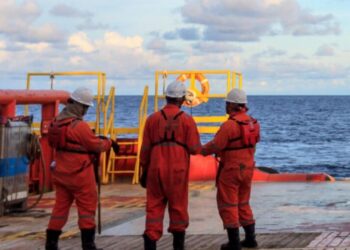Crown Estate Scotland signed its first ever lease option for carbon dioxide (CO2) storage. The project will be based at the St Fergus Gas Terminal on the Aberdeenshire coast and aims to leverage oil and gas assets to deliver large scale, cost-effective CO2 transport and storage infrastructure in the Central North Sea.
Carbon capture and storage captures large quantities of carbon dioxide emissions from industrial processes before being released into the atmosphere. The CO2 is then stored in underground locations.
[smlsubform prepend=”GET THE SAFETY4SEA IN YOUR INBOX!” showname=false emailtxt=”” emailholder=”Enter your email address” showsubmit=true submittxt=”Submit” jsthanks=false thankyou=”Thank you for subscribing to our mailing list”]
Scotland’s geology deep below the Central North Sea is capable of accommodating about 75% of the UK’s capacity of CO2 emissions, helping meet both UK and Scottish climate change targets. As for the St Fergus Gas Terminal, it is an active industrial site where 35% of all the natural gas used in the UK comes onshore.
Alan James, Managing Director of Pale Blue Dot Energy and Acorn CCS Project Leader, mentioned that this project is an important step to develop one of the UK’s first CO2 transportation and storage networks. T
hrough Acorn CCS, Scotland can use legacy oil and gas assets to deliver environmental benefits, unlocking CO2 transportation and storage solutions for other carbon capture utilisation and storage (CCUS) projects along the east coast of the UK
Finally, Paul Wheelhouse, Minister for Energy, Connectivity and the Islands, commented that Scotland’s over-supply of offshore geological storage assets provides an economic opportunity to be at the centre of a hub for the importation and storage of CO2 from Europe.

































































